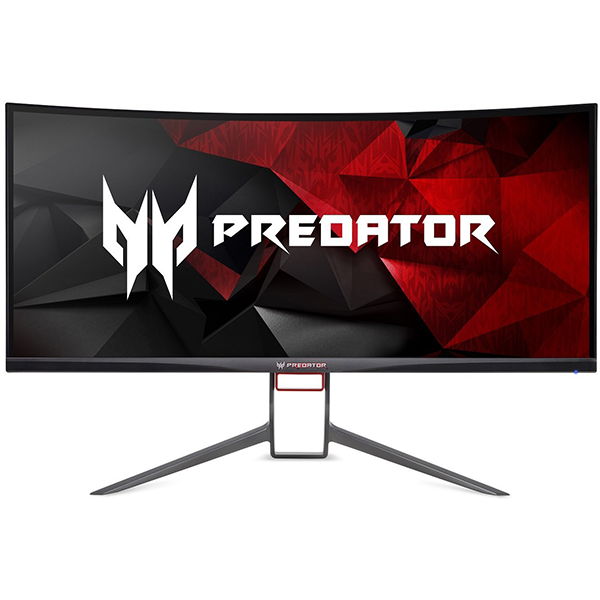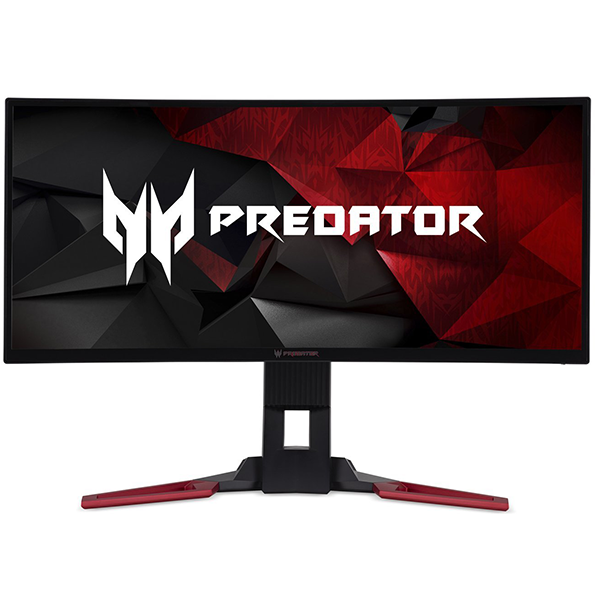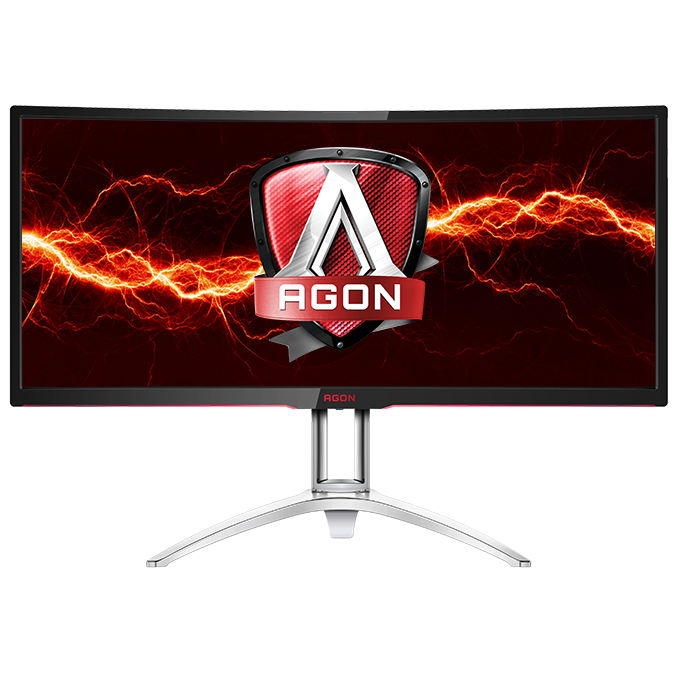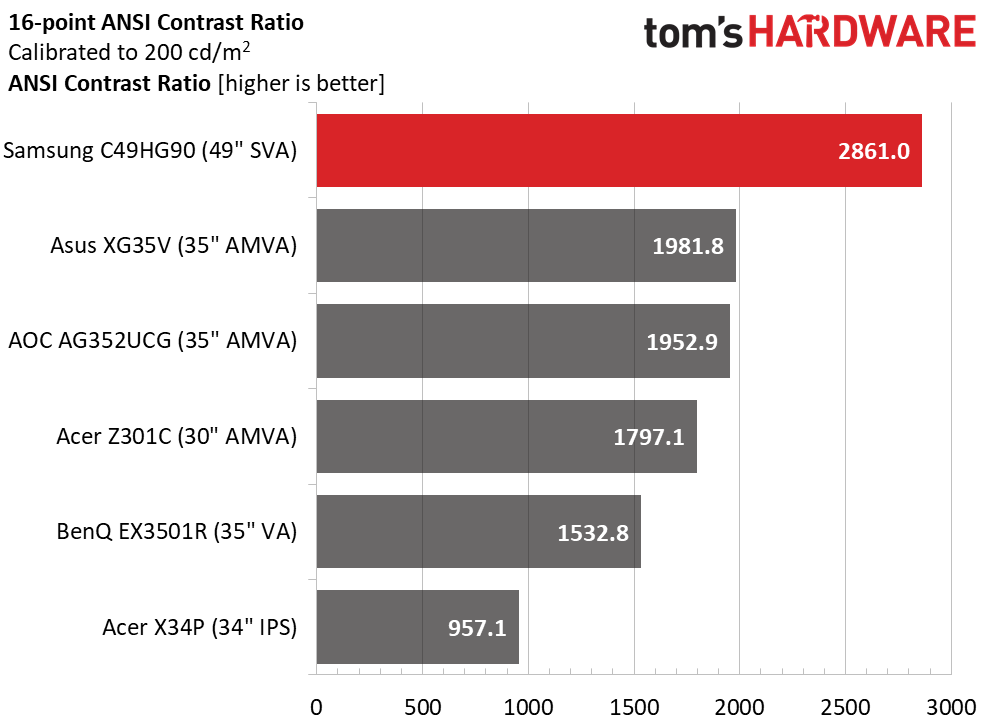Samsung CHG90 Review: No More Dual-Monitor Gaming
Debating a multi-screen setup? This bad boy can replace two 27-inch 16:9 monitors.
Why you can trust Tom's Hardware
Brightness & Contrast
To read about our monitor tests in-depth, please check out Display Testing Explained: How We Test Monitors and TVs. Brightness and Contrast testing is covered on page two.
Uncalibrated – Maximum Backlight Level
For all SDR tests, we’re comparing the CHG90 to 5 other ultra-wide gaming monitors: Acer’s Z301CT and X34P, Asus’ XG35V, BenQ’s EX3501R and AOC’s AG352UCG. All offer fast refresh and adaptive sync, and all but the X34P (an IPS panel) are VA panels.
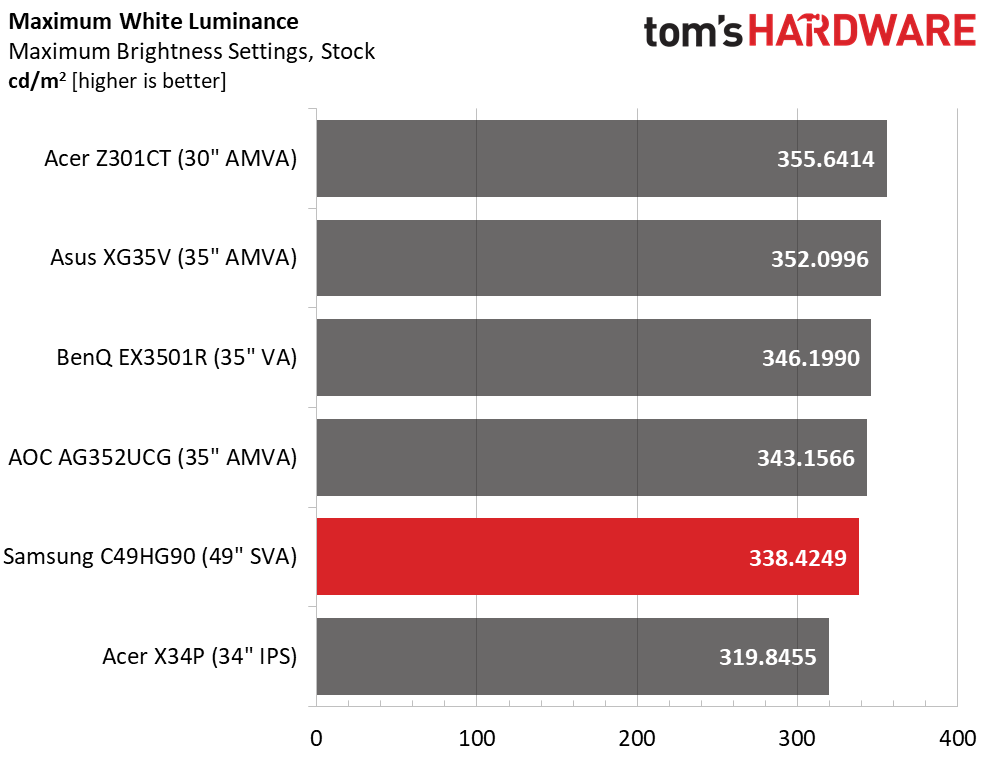
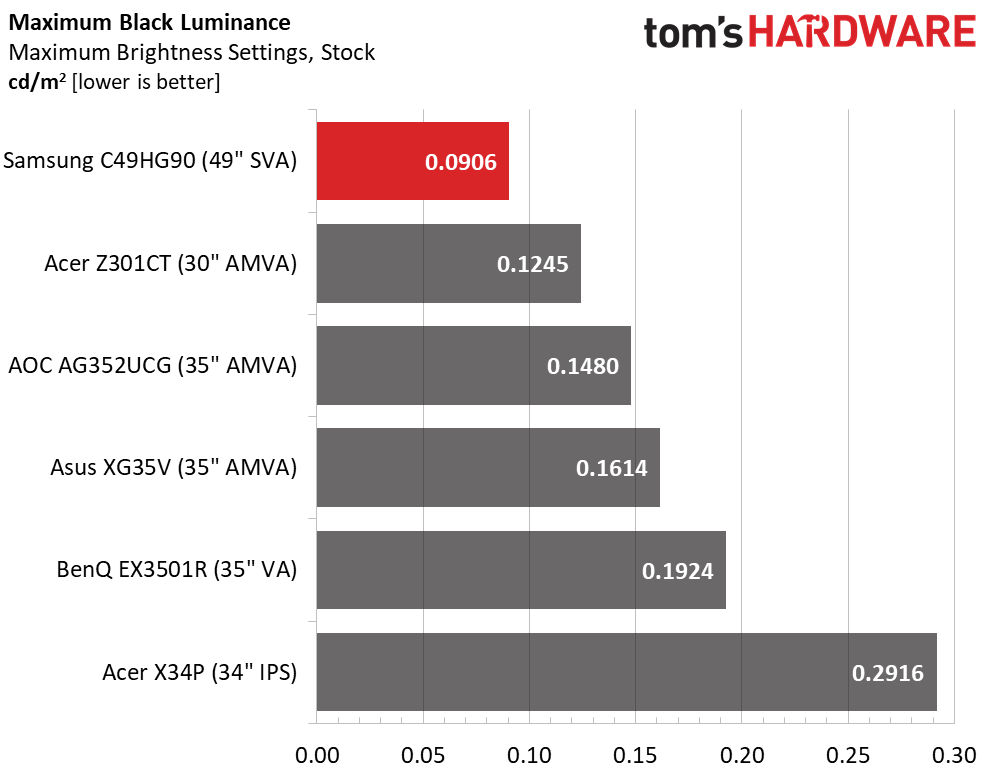
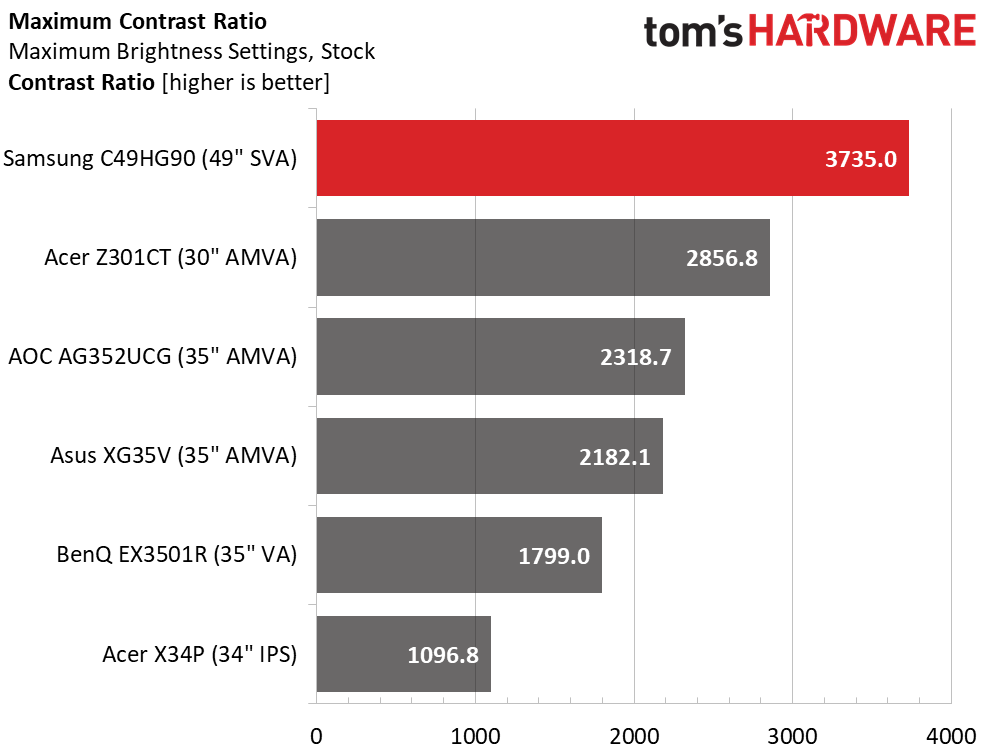
All monitors operate in a small window of max output between 319 and 355 nits, placing them all on roughly equal footing. The lone IPS screen has a major disadvantage in black levels, however. As such, the X34P’s minimum is more than 3 times higher than the group-leading Samsung. In the end, the CHG90 won the contrast contest by a comfortable margin. While this might not be a deal-maker on its own, it bodes well for its HDR capabilities.
Uncalibrated – Minimum Backlight Level
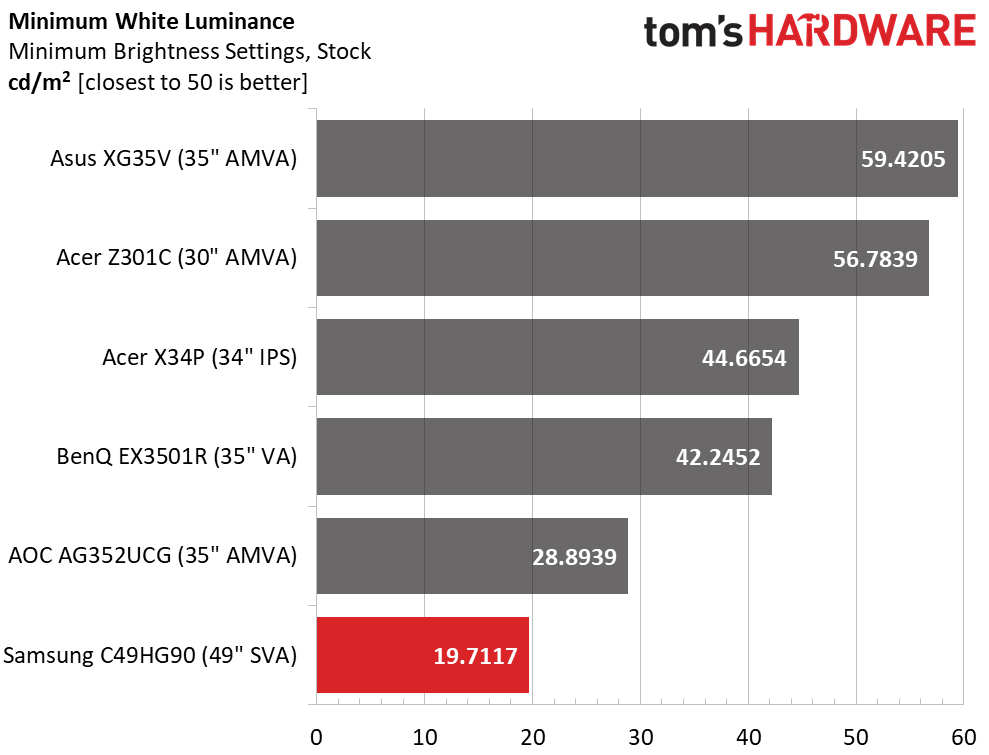
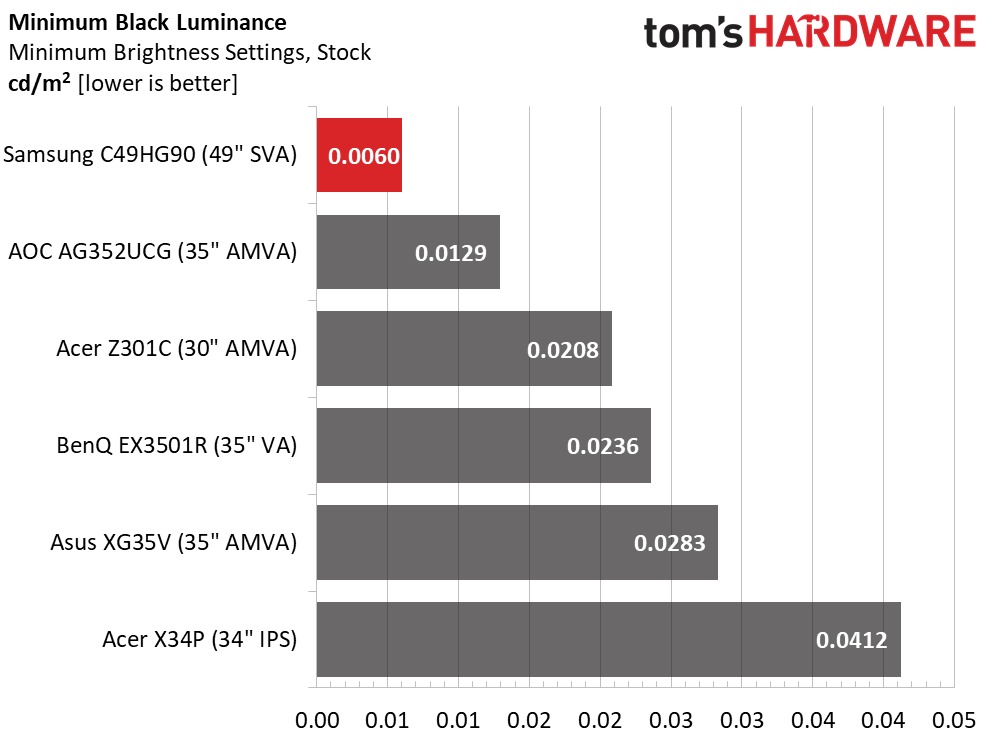
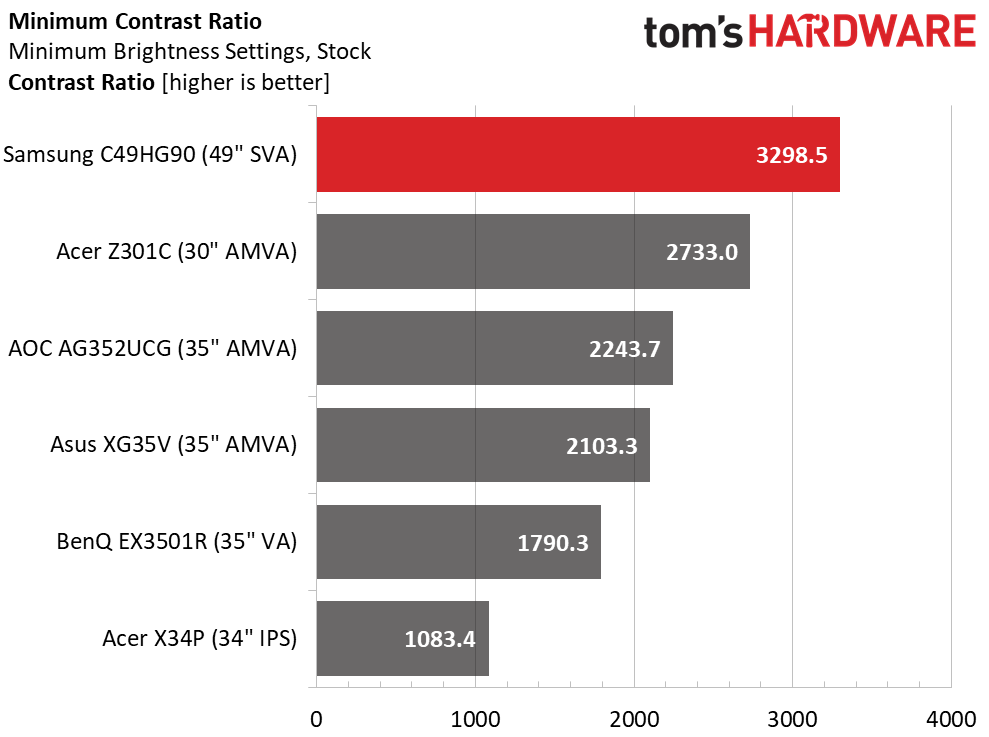
The CHG90 can be dialed down to a relatively useless 19 nits. Since this is far darker than necessary, set brightness to 19 for a more comfortable 50 nits. Contrast dropped a little at this level, but at 50 nits, it’s closer to the 3735:1 we recorded in the max output test.
After Calibration to 200cd/m2
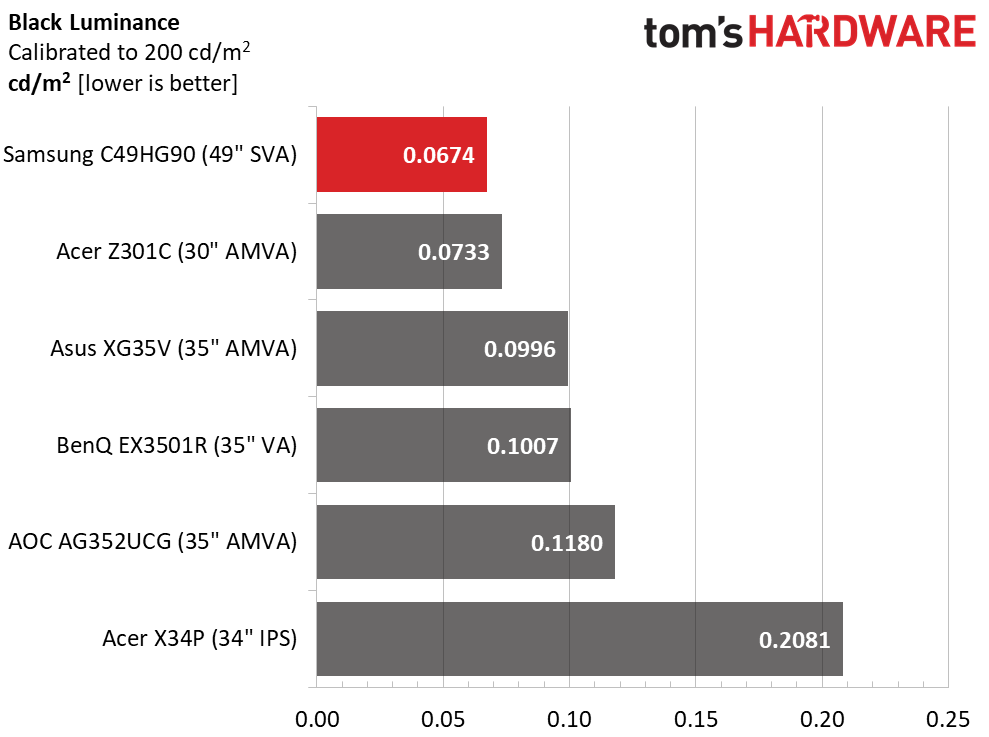
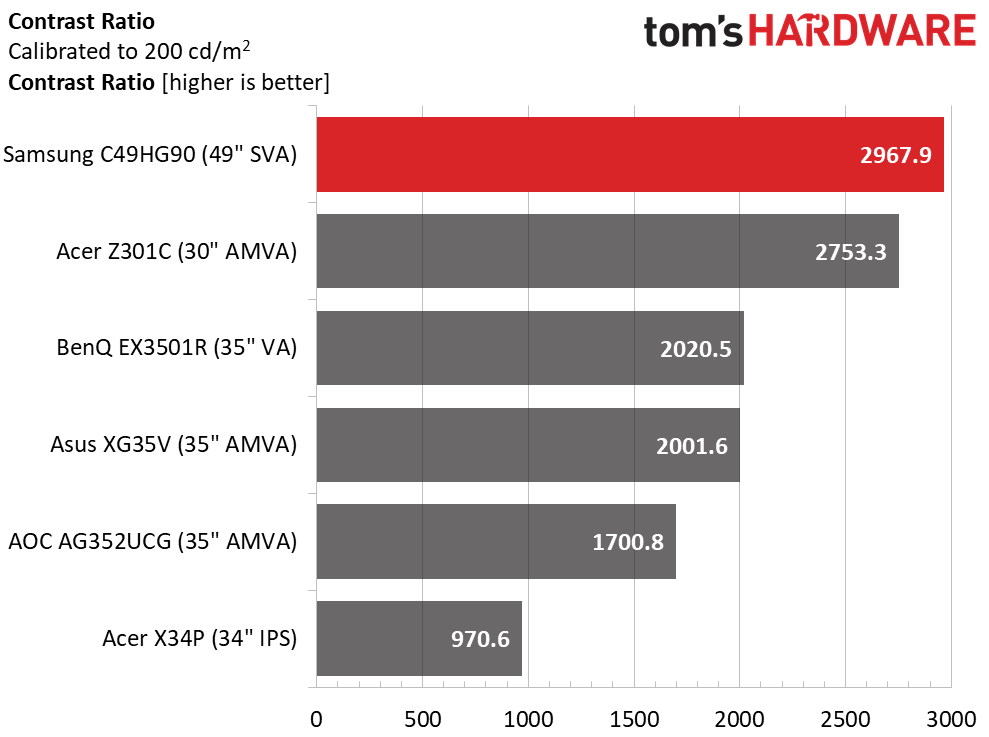
Calibration cost the CHG90 a little dynamic range but not enough to knock it out of first place. It’s one of the highest contrast monitors we’ve seen in a while, 3 times better than the average IPS panel. In our opinion, this makes up for its relatively low resolution. It should be noted that we did not use the zone-dimming feature for this test because that feature only applies to HDR content.
HDR Brightness & Contrast
We can’t fairly compare HDR and SDR contrast, so we substituted different monitors for these tests only. They are Dell’s UP2718Q and S2719DM, Acer’s PE320QCK and BenQ’s EX3501R and EW3270U. Each is distinctively different in its HDR quality. The UP2718Q is the only screen with a full-array backlight, but as you’ll see, Samsung has some impressive tricks up its sleeve when it comes to output and contrast.
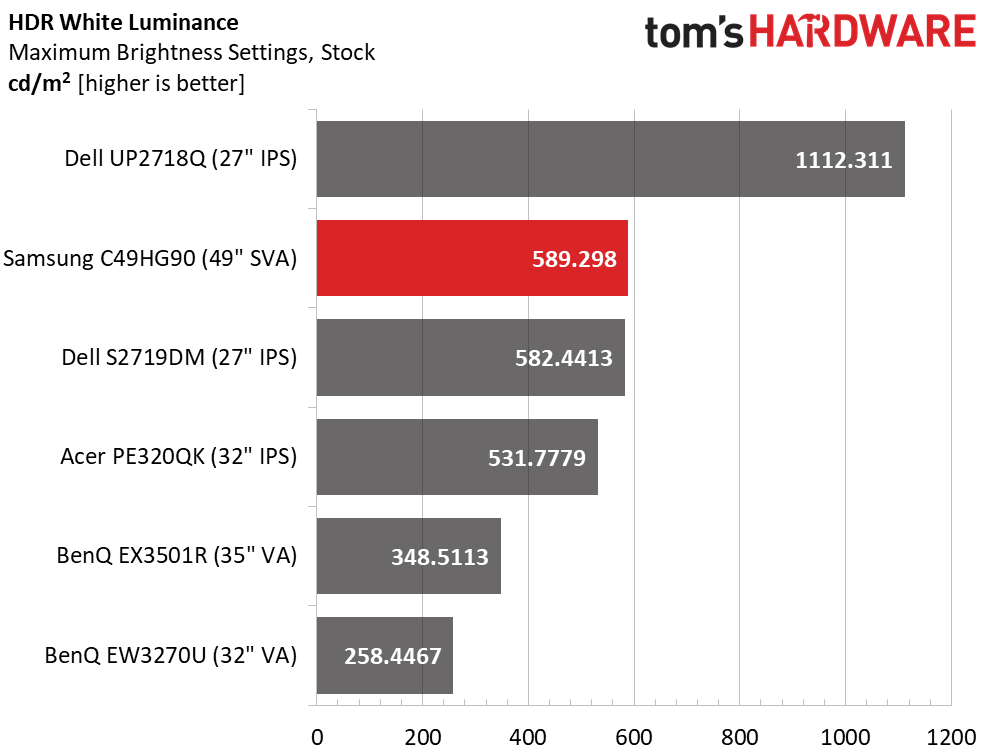
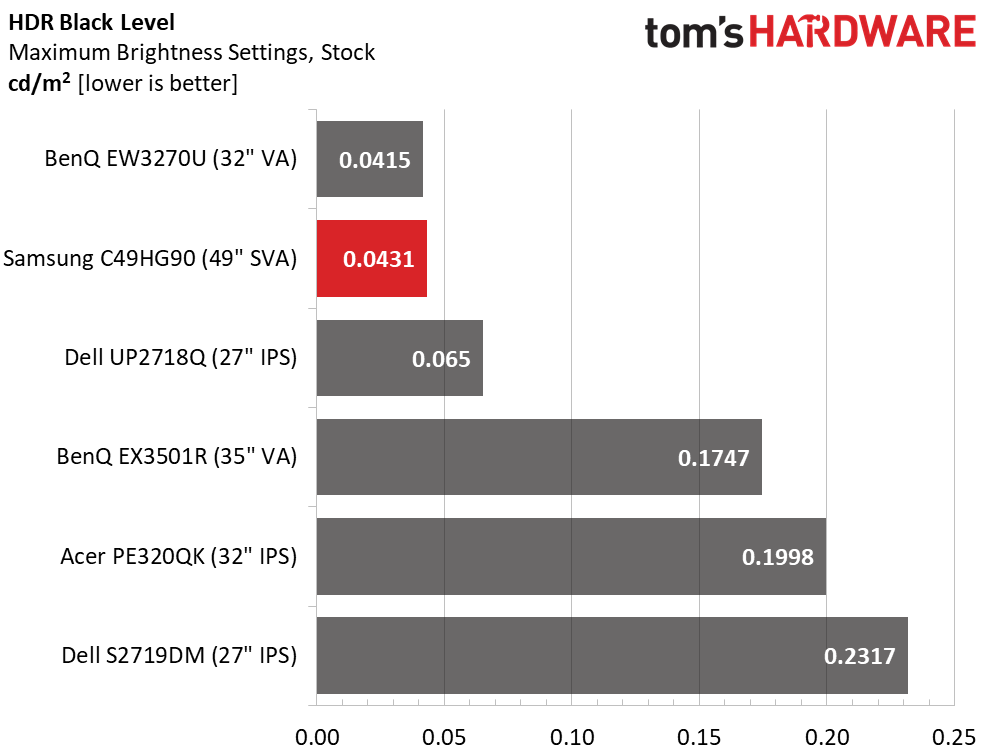
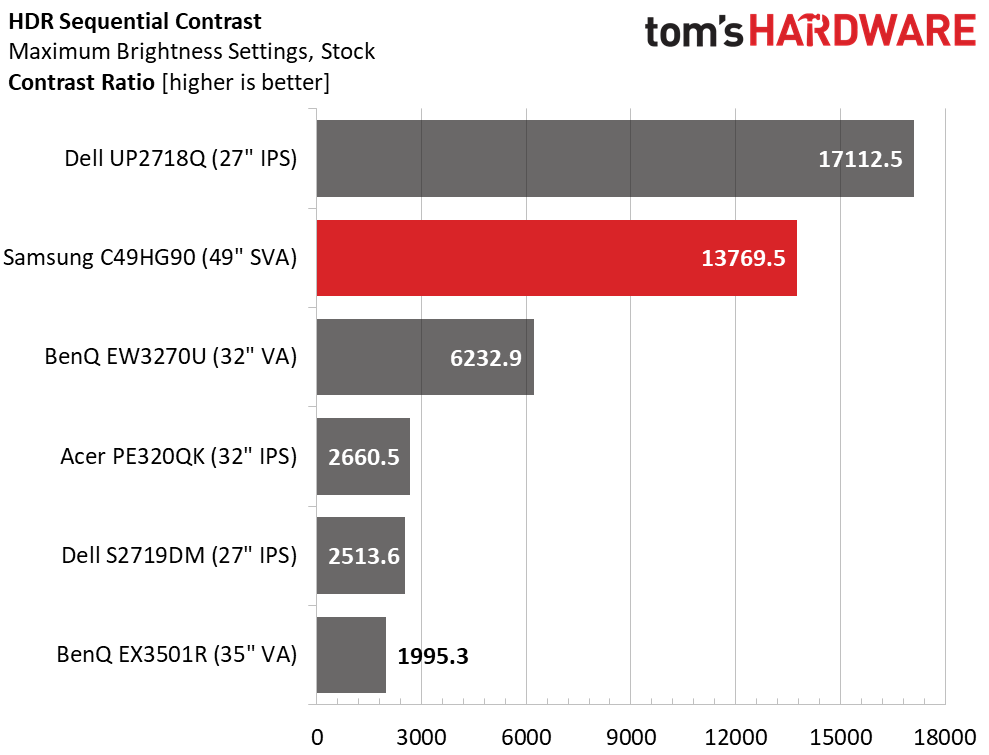
The CHG90 is not the only edge-backlight panel that can top 500 nits in HDR mode, but it is the only VA example. This technology is not known for high brightness, so how does Samsung do it? With a zone-dimming backlight. Many TVs can selectively dim part of their edge light, and this monitor can too. What that means is to achieve 589 nits, we had to measure a 10% window rather than a full-field pattern. The same is true of the Dell UP2817Q and many HDR-capable displays.
Get Tom's Hardware's best news and in-depth reviews, straight to your inbox.
The CHG90 shuts off its backlight completely when a 0% signal is detected, so to measure the black level, we turned on the OSD quick menu and recorded the .0431cd/m2 number shown above. That delivers a superb 13,789.5:1 static HDR contrast value, the second highest we’ve seen thus far.
ANSI Contrast Ratio
Intra-image contrast is nearly as high as sequential, which demonstrates the high-quality panel in use here. While HDR content will show the CHG90 to its fullest potential, SDR will look better here than on most other monitors, especially IPS and TN designs.
MORE: Best Gaming Monitors
MORE: How We Test Monitors
MORE: All Monitor Content
Current page: Brightness & Contrast
Prev Page OSD Setup & Calibration Next Page Grayscale, Gamma & Color
Christian Eberle is a Contributing Editor for Tom's Hardware US. He's a veteran reviewer of A/V equipment, specializing in monitors. Christian began his obsession with tech when he built his first PC in 1991, a 286 running DOS 3.0 at a blazing 12MHz. In 2006, he undertook training from the Imaging Science Foundation in video calibration and testing and thus started a passion for precise imaging that persists to this day. He is also a professional musician with a degree from the New England Conservatory as a classical bassoonist which he used to good effect as a performer with the West Point Army Band from 1987 to 2013. He enjoys watching movies and listening to high-end audio in his custom-built home theater and can be seen riding trails near his home on a race-ready ICE VTX recumbent trike. Christian enjoys the endless summer in Florida where he lives with his wife and Chihuahua and plays with orchestras around the state.
-
lhughey 1080p? Hard pass on this. It needs at least 1440 and 1600 would be better. I know that diminishes the market for this, but people willing to pay $1000 for a monitor are going to be have a strong video card. Nvidia is about to drop a new generation of cards also, so the entry to 3840*1600 is about to move down to GT2070 series.Reply -
Fait When someone comes out with one that is 4k HDR10+ G-sync and 144 or 240Hz, then I will get excited. The specs here just aren't that impressive.Reply -
milkod2001 Dear Samsung. Drop the facking curve, make it 32'' 4k, 100Hz, factory calibrated and we all be happy. Kind regards Most customers.Reply -
SkyBill40 I saw one of these in the wild recently. It was, in a word, impressive. That said, the 1080p resolution is likely a no go for many despite the high refresh rate and excellent quality VA panel. The curve doesn't appeal to everyone but having a smooth rather than flat view in terms of peripheral vision is pretty much a requirement for something of this size. If I had the desk space for it, I would definitely be in the market... much to my wife's dismay.Reply -
Alpha Gametauri Ehh, i think i will stick with my Alienware 3418DW's at 3440x1440 res, 120hz, and GSync. Plus, i'm dual screening either way.Reply -
10tacle Yeah I immediately lost interest when I read it was 1080 on the vertical resolution. I can't stand that pinched look and lacking in vertical resolution with a super wide screen even at 21:9 aspect ratio, let alone this one at 32:9. To me it's like looking at a monitor with eyes half closed. I remember losing my 16:10 ratio 25.5" Samsung 1920x1200 monitor and upgrading to a 16:9 27"1440p monitor. It took a while to get used to the loss of vertical height even though it was a resolution upgrade.Reply
But it's nice to see a true 10-bit panel of this size in a sub-$1,000 (USD) price range, so kudos for Samsung on that. Just give me more vertical resolution on these extreme ulrawides and I'm sold.
21240082 said:If I had the desk space for it, I would definitely be in the market... much to my wife's dismay.
That's what kills me about women. We men have to fight for a little master bedroom closet space for our few clothes and shoes while they pack it wall to wall with their ever growing clothes and shoe collection from weekend shopping trips. Then we are lambasted for wanting our tech toys which are only purchased once every several years. -
SkyBill40 Reply21240211 said:21240082 said:If I had the desk space for it, I would definitely be in the market... much to my wife's dismay.
That's what kills me about women. We men have to fight for a little master bedroom closet space for our few clothes and shoes while they pack it wall to wall with their ever growing clothes and shoe collection from weekend shopping trips. Then we are lambasted for wanting our tech toys which are only purchased once every several years.
To be honest, she's really not that bad. She doesn't like that gaming is a hobby of mine and feels it to be a wasteful time sink, but she is fine with me doing my thing when I feel like doing it. Beyond that, I just have some exceedingly expensive hobbies: firearms, computing, high end A/V, and cars. :/
While I could probably make it work (or any other for that matter), I hold off due to her sacrificing for the greater good and spending money on our house and such rather than expensive individual things with limited purpose. It's fine... though I won't lie that I *am* in the market for a new display as my 1920*1200 60Hz Samsung is long in the tooth and holding back my beastly 1080. -
bolkar Such a waster opportunity. 1080p vertical? really? This beast have half the pixels of my 27 inch 4K monitor, even though this is 49inch. Double the pixels on both directions then we have something to talk about...Reply
